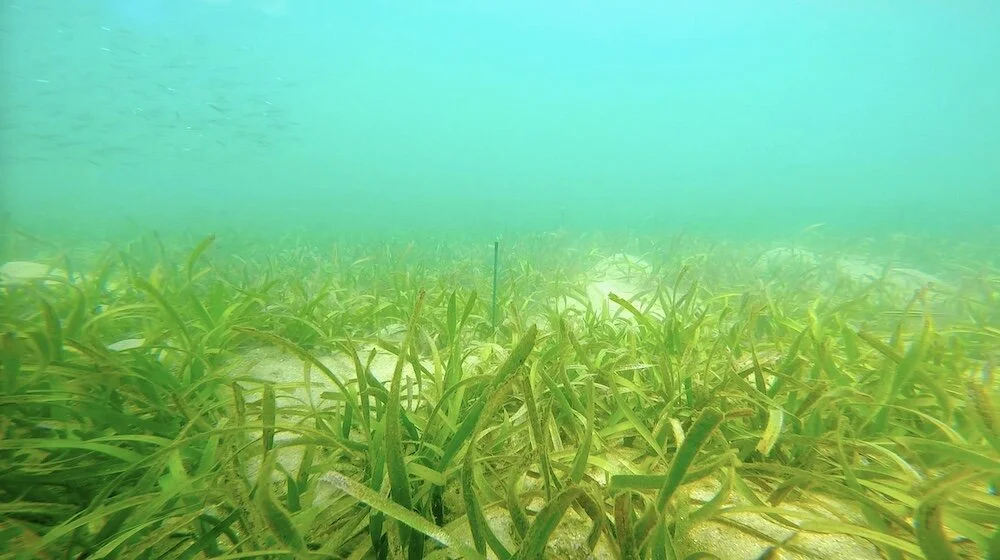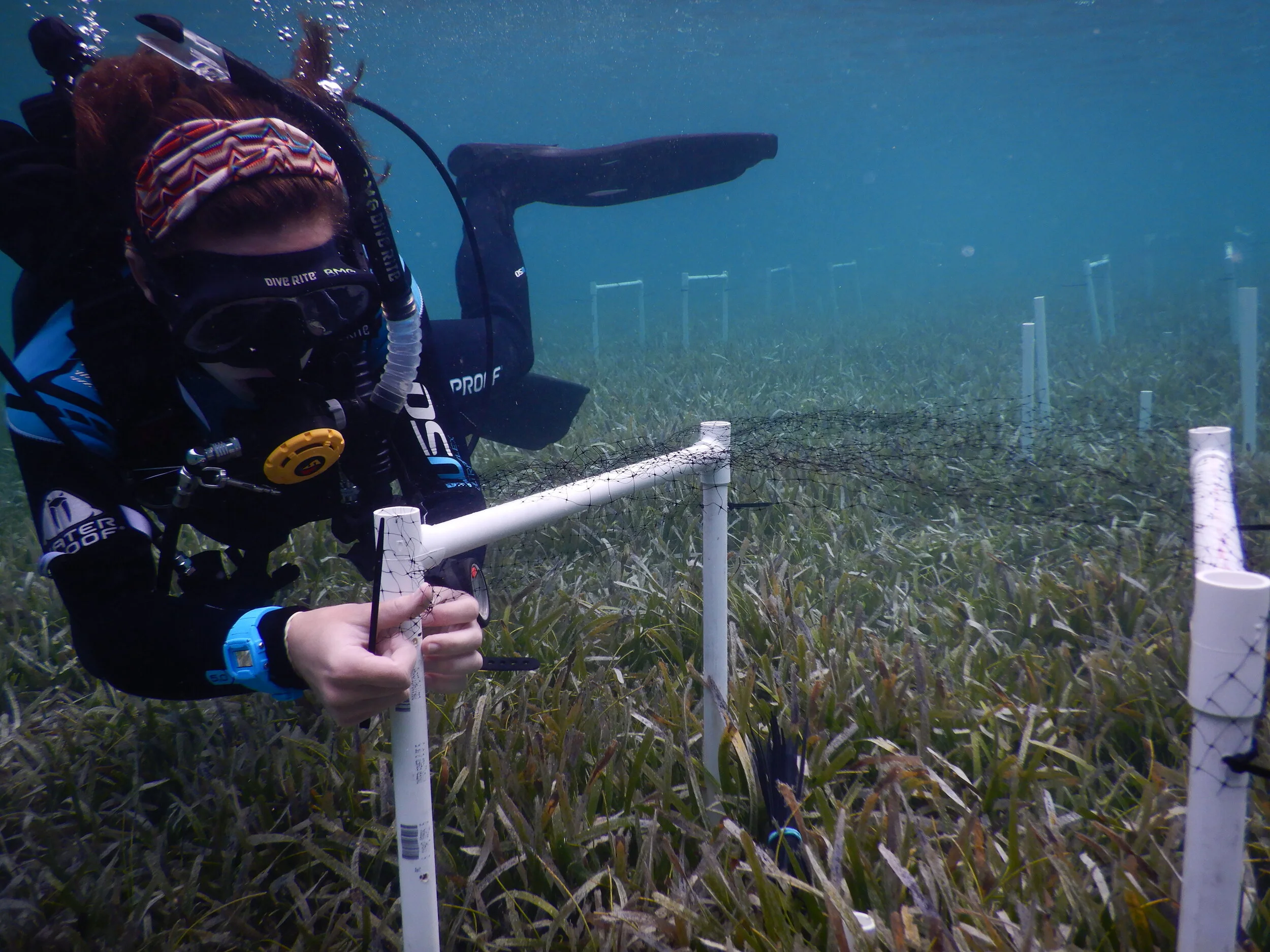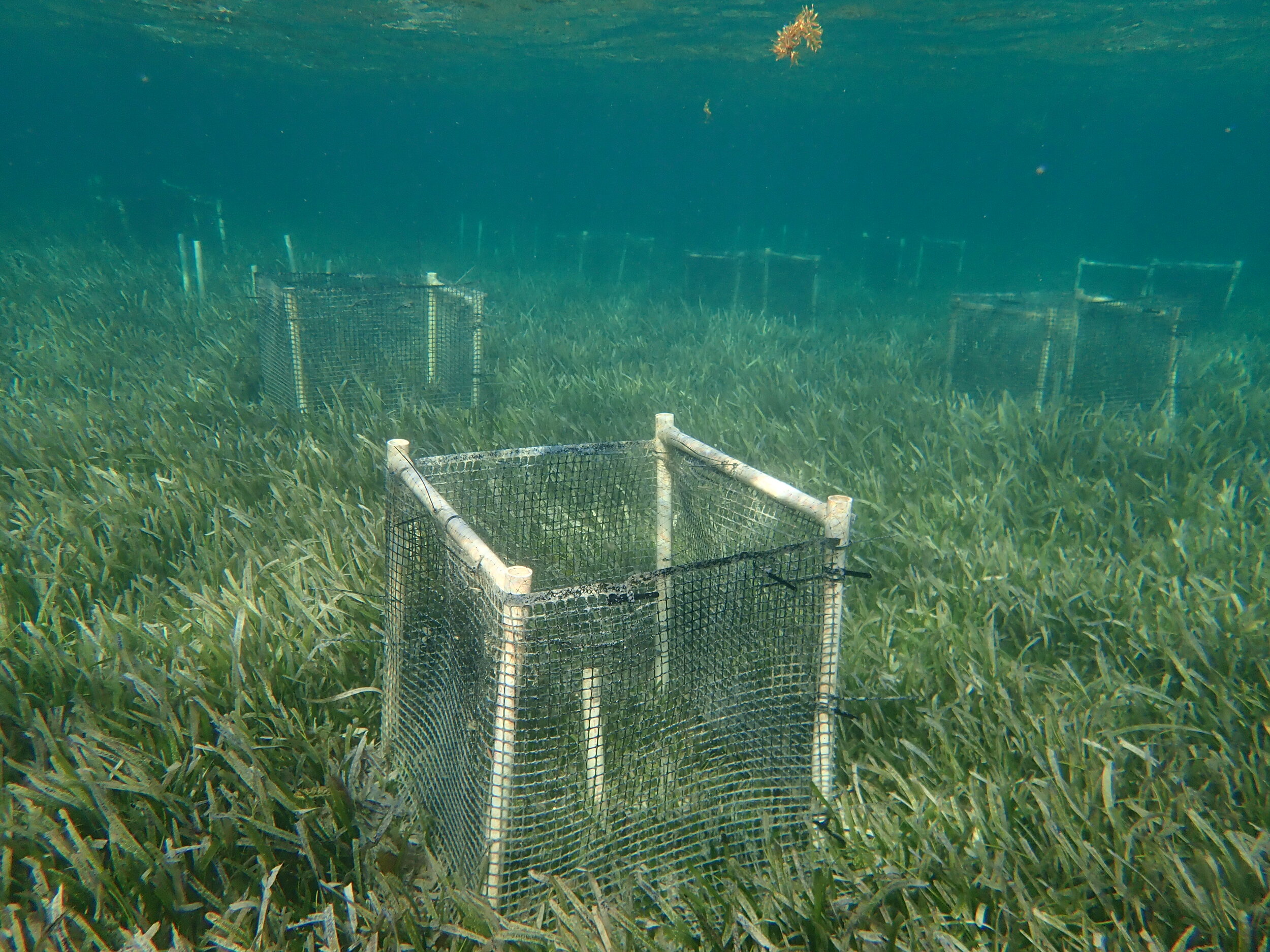Is The (Sea)grass Greener On The Other Side?
Bethany Gaffey
This week on Too Hot to Handle, we tackle a phenomenon known as tropicalization and its effects on seagrass. Read on to learn about my role as a scientific diver for the Smithsonian Institution in a collaborative, international research project known as the Thalassia Experimental Network (TEN).
Meet Thalassia:
Thalassia testudinum is a species of seagrass known as turtlegrass. The extensive, dense beds it creates make it an extremely important habitat-forming species. Like other seagrasses, turtlegrass is both ecologically and economically important.
Photo found here
Economic Importance
Can be used to make fertilizer, furniture, etc.
Serves as a nursery for commercial fisheries
Valued at $3,500*/yr/hectare**
*turtlegrass alone
**about 2 football fields
Ecological Importance
Stabilizes sediment
Provides housing/food for animals
Facilitates biodiversity
Stores carbon dioxide
What is Tropicalization?
One of the many consequences of climate change is ocean warming. As water temperatures change, so do the habitat ranges of many marine species. Therefore, ‘tropicalization’ is used to describe the phenomenon whereby mobile herbivores expand their ranges to graze on areas previously unexposed to such tropical species. Major disappearances of kelp forests in Japan and Australia are key examples of tropicalization and its powerful effects on ecosystems.
A long-spined sea urchin grazing on a seagrass bed. Photo: Bethany Gaffey @scubagirlproblems
Tropicalization of Turtle Grass
The purpose of this research focused on the tropicalization of turtlegrass, particularly in the Gulf of Mexico. The major herbivory changes in these seagrass beds include a 22-fold increase in emerald parrotfish, which consume nearly 5 times more seagrass than the native grazers, and the rebounding populations of green sea turtles and manatees. Combined with the effects of seasonal changes, like less light in winter months, and excess nutrient inputs to coastlines, the increase of herbivory on these seagrass beds could have significant impacts on their productivity and abundance.
Welcome to TEN
The Thalassia Experimental Network (TEN) was organized by the Smithsonian Institution as a collaborative, standardized experiment to simultaneously take place at multiple sites across the natural geographic range of turtlegrass. The three main questions the project aims to answer are:
Are there natural gradients of grazing intensity and herbivory across the wide latitudinal range of turtlegrass?
While light and temperature vary in a predictable way across latitudes, how do these two factors affect seagrass function and response to grazing?
How does nutrient supply (nitrogen and phosphorous) regulate seagrass productivity and response to grazing?
To summarize, the three main factors being studied are:
Grazing
Light and temperature
Nutrients
A map notating each experimental site across the Caribbean, Atlantic, and Gulf of Mexico. Photo: Google Maps
My Role in The Research
Each site of the experimental network was assigned a scientific diving intern and site partner. In my case, I was stationed in the Cayman Islands. The experiment was set up in the summer season and then repeats in the winter season. Therefore, my time on Little Cayman ran from May 2 – Nov 2, while the second half of the experiment is being conducted at this very moment by another intern.
So…What Did You Really Do?
Overall, my role in the project was relatively simple. First came site set-up. To keep the experiment standardized, we had to find a patch of seagrass the proper size, depth, and density that the project required. Then came setting up the plots. There are five rows of ten 1m-2 plots in a rectangular patch of seagrass parallel to shore. Each plot is marked in all four corners by PVC pipes and has a PVC pole in the center for attaching nutrient bags. Going back to the three main research questions, the plot treatments are:
1) Fully or partially caged with mesh – to limit grazing
2) Fertilizer bags inside – to simulate nutrient inputs
3) Artificial clipping – to simulate different intensities of grazing
4) Control – no caging material, no nutrients, and no clipping of the seagrass
Meanwhile, Odyssey light loggers were placed both inside and outside of a fully-caged plot to monitor the effects that the mesh had on light. Also, site itself serves as a representation of the light and temperature seen at this latitude.
Installing a mesh top to one of the plots during site set-up. Photo: Bethany Gaffey @scubagirlproblems
Maintenance and Sampling
The remainder of my job was to maintain plot treatments and collect samples. My maintenance duties included:
· Cage cleaning
· Artificial clipping
· 24-hr grazing assays
· Downloading logger data
· Replacing fertilizer bags
Between site set-up, my bi-weekly maintenance trips, and an intensive sampling week that took place in early September, sample collection included:
· 24-hr grazing assays
· Fish and invert surveys
· Biomass cores
· Epifauna (what is living on the blades)
· Decomposition
· Productivity
· Percent cover
· Shoot density
A view of the site following some thorough cage cleaning. Photo: Bethany Gaffey @scubagirlproblems
And Now We Wait…
With my role in the project complete and another 4 months of maintenance and sampling to go, the research is just over halfway done. What follows next will be data analysis, report write-up, and eventual publishing in a scientific journal. While I don’t have results to share, I will say that it will be interesting to see how the variability of each site plays a role in the health of the seagrass meadows. After all, the seagrass may not be all that greener on the other side.





